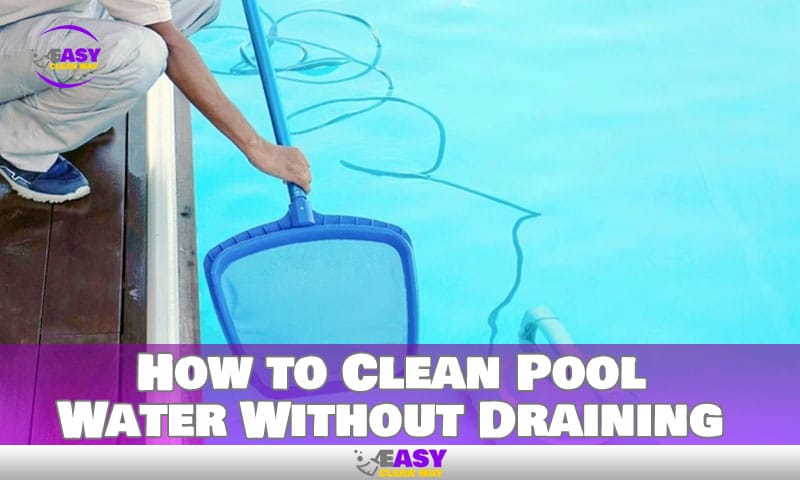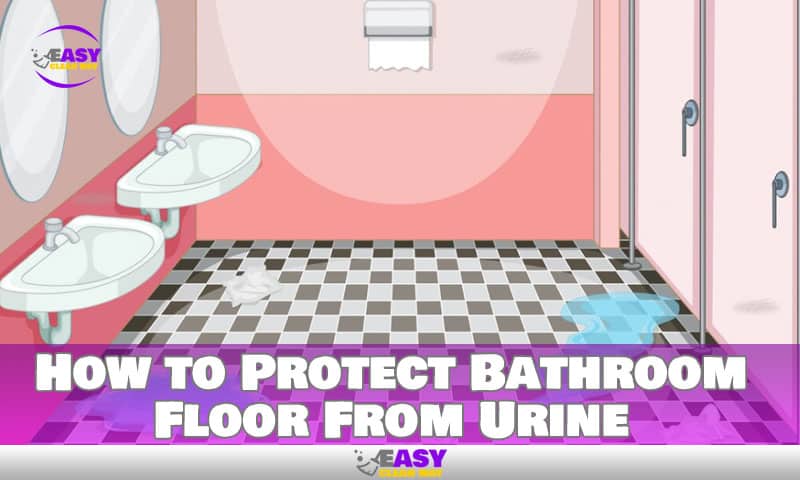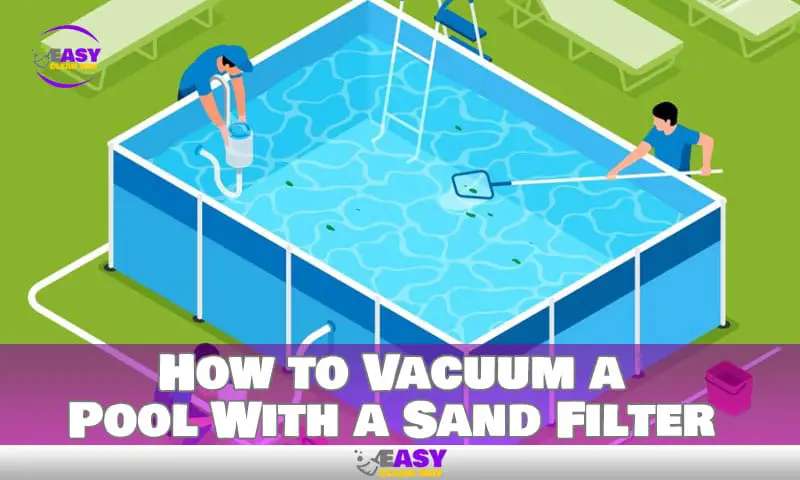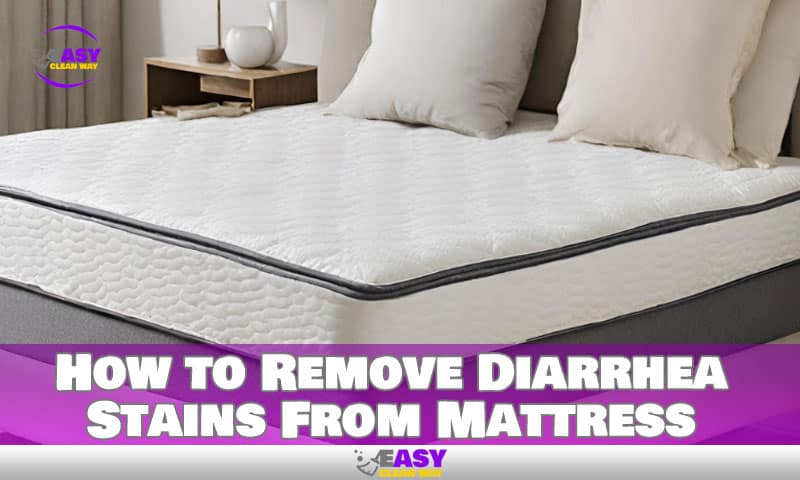
To clean algae off a screen enclosure, mix equal parts of water and white vinegar in a spray bottle, then spray the solution on the affected areas and scrub them using a soft-bristled brush. Rinse the area with water thoroughly.
Cleaning algae off a screen enclosure can be a challenging task, but it is essential to maintain the appearance and longevity of your enclosure. Algae is a common problem for screen enclosures, especially during warm and humid weather conditions. When left unattended, algae can grow and cause discoloration on the screening material, which can lead to permanent damage.
It is important to clean algae off your screen enclosure regularly to prevent this type of damage and keep it looking new. With the use of a simple solution of water and vinegar and a soft-bristled brush, you can effectively remove the algae and restore the appearance of your screen enclosure.
Understanding Algae Formation On Screen Enclosures
Screen enclosures offer a perfect spot for relaxation and entertainment outdoors while being sheltered from the elements. However, algae formation can detract from an ideal outdoor experience, compromising not only structural integrity but also posing health hazards. This section focuses on understanding algae formation in screen enclosures.
The Effects Of Algae On Screen Enclosures
Algae formation on screen enclosures can have various undesirable effects, which include:
- Reduces the curb appeal- algae give the enclosure a dirty, unsightly appearance, potentially affecting the property’s market value.
- Damages structural integrity- the algae penetrate the aluminum beams and leave purplish stains. It may also grow under the screws, weakening the screws’ grip and causing corrosion.
- Compromises cleanliness- the enclosure attracts other debris, such as moss, mildew, and bird droppings, which further reduce the cleanliness of the enclosure.
Factors That Contribute To Algae Growth On Screen Enclosures
Factors that contribute to algae growth include:
- Humidity: The higher the humidity levels, the greater the likelihood of algae growth.
- Lack of sunlight: Screen enclosures that do not receive enough sunlight provide the perfect environment for algae to thrive.
- Rainfall: Warm, damp environments created by frequent rains provide an ideal environment for algae growth.
- Poor ventilation: Poor air circulation in the area around the screen enclosure can promote algae growth.
Understanding The Different Types Of Algae And Their Characteristics
There exist different types of algae that can form on screen enclosures. Understanding their differences, and characteristics, and how to identify them can help in selecting the best treatment for removal.
- Green algae: It is the most common type of algae on screen enclosures, and it thrives in moist, shady environments. It appears as a green film discoloring the walls and fittings of the enclosure.
- Black algae: It grows on hard surfaces, including screen enclosures. It appears as black dots with a hard texture in the shape of a tiny mushroom.
- Red algae: It thrives in warm water and can be found in pools, ponds, and other water sources. It appears as red or pink hues and slimy texture.
Understanding the formation of algae on screen enclosures, the factors that contribute to their growth, and the different types of algae helps homeowners select the best treatment for removal. Regular cleaning, proper ventilation, and removing other debris from the enclosure can prevent the formation of algae.
Preventive Measures To Mitigate Algae Growth On Screen Enclosures
Regular Cleaning And Maintenance Of Screen Enclosures
To prevent algae growth on screen enclosures, regular cleaning, and maintenance are crucial. Here are some key points to keep in mind:
- Clean the screen enclosure every few months using a pressure washer or a soft brush and mild detergent. Avoid using harsh chemicals that may damage the screens.
- Remove any debris or dirt that accumulates on the screen enclosure, as they can encourage algae growth.
- Regularly inspect the enclosure for any signs of wear and tear, and repair any damage immediately. This will prevent water from seeping in and stagnating, which can lead to algae growth.
Proper Drainage System Installation To Prevent Water Accumulation
Algae thrive in water, so ensuring proper drainage of your screen enclosure is crucial. Here are some key points to keep in mind:
- Install a drainage system that channels water away from the enclosure. This can be in the form of gutters or drains at the base of the enclosure.
- Check to make sure that the drainage system is working effectively and not clogged with debris. Over time, gutters can become clogged with leaves and other debris, which inhibits proper water flow.
Planting Of Natural Algae Inhibitors Around The Screen Enclosure
Mother Nature has a solution for everything, including algae growth on screen enclosures. Here are some key points to keep in mind:
- Plant natural algae inhibitors such as oregano or cinnamon around the screen enclosure.
- Natural algae inhibitors have a pleasant scent that helps to keep the air fresh and clean.
- These plants also repel insects and other pests that may be attracted to the enclosure.
Use Of Professional Algae Prevention Treatments
Sometimes, preventive measures may not be enough, and it becomes necessary to seek professional help. Here are some key points to keep in mind:
- Hire a professional to apply an algae prevention treatment to the screen enclosure.
- These treatments are safe and effective and will help to keep your enclosure algae-free for a longer period.
- Follow the manufacturer’s instructions carefully to ensure that you do not damage the screen enclosure or harm the surrounding environment.
Remember, prevention is key when it comes to algae growth on screen enclosures. By following these preventive measures, you can ensure that your screen enclosure stays clean and algae-free for years to come.
Equipment Required For Removing Stubborn Algae From Screen Enclosures
Removing stubborn algae from screen enclosures can be a challenging task, especially when it has been accumulating for some time. Fortunately, there is equipment that can make this task much more efficient, allowing you to restore your screen enclosure to its former glory.
We will outline the essential equipment and tools needed to tackle even the most stubborn algae growth on your screen enclosure.
Pressure Washer
A pressure washer can be one of the most effective tools for removing algae from a screen enclosure. With a pressure washer, you can apply a high-pressure stream of water that can easily blast away even the most stubborn algae and dirt.
Here are some key points to keep in mind:
- Choose a pressure washer with a nozzle capable of producing a high-pressure stream of water.
- Use a low-pressure setting to avoid damaging the screen.
- Always wear safety goggles and gloves when using a pressure washer.
Algae Removal Solution Mixtures
Many algae removal solution mixtures are available on the market, which can be particularly useful for removing stubborn algae growths. Here are some tips to keep in mind:
- Choose a solution specifically designed for removing algae from screen enclosures.
- Always follow the manufacturer’s instructions.
- Mix the solution in a spray bottle for easy application.
Soft-Bristled Brush
A soft-bristled brush is an essential tool for removing algae from a screen enclosure. Here are some important points to keep in mind:
- Choose a brush with soft bristles to avoid damaging the screen.
- Use gentle pressure when scrubbing the screen.
- Work in small sections to avoid missing any spots.
Extension Wand
An extension wand is a great tool for reaching high and hard-to-reach areas on your screen enclosure. Here are some key points to keep in mind:
- Choose an extension wand that is long enough to reach the areas you need to clean.
- Use caution when using an extension wand and always wear safety gear.
- Keep the wand level to avoid accidentally damaging the screen.
Cleaning algae from a screen enclosure is never a pleasant task. However, by following these tips and using the appropriate equipment, you can make the process more efficient and less time-consuming. With a little elbow grease and perseverance, you can restore your screen enclosure to its former glory.
Step-By-Step Guide To Remove Algae From Screen Enclosures
Algae on a screen enclosure are not only unsightly but can also limit airflow, making the porch feel muggy. Cleaning algae off a screen enclosure is essential if you want to keep your outdoor area looking its best. Here’s a step-by-step guide to removing algae from screen enclosures.
Preparing The Algae Removal Solution Mixture
To clean algae off a screen enclosure, begin by making the solution mixture. Here’s how:
- Mix 1 gallon of warm water with 1 cup tri-sodium phosphate (tsp) and 1 cup household bleach.
- Make sure to use protective gloves, goggles, and clothing before working with tsp.
- Stir the mixture until the tsp dissolves entirely.
Pre-Cleaning Of The Screen Enclosure
Before applying the algae removal solution mixture, pre-cleaning the screen enclosure is essential. Here’s how:
- Remove any loose debris from the screen enclosure using a brush or broom.
- Spray the screen enclosure with water using a garden hose.
- Scrub the screen enclosure using a stiff-bristled brush to remove any visible dirt and grime.
Application Of The Algae Removal Solution Mixture
Now that the screen enclosure is pre-cleaned, apply the algae removal solution mixture. Here’s how:
- Dip a long-handled scrub brush into the mixture and scrub the screen enclosure in a circular motion.
- Make sure to cover all the areas with the algae-affected screen enclosure.
- Let the mixture sit for 15-20 minutes.
Power Washing And Scrubbing The Screen Enclosure
After the mixture has sat for 15-20 minutes, power washes the screen enclosure to remove the algae and dirt. Here’s how:
- Attach the power washer to a garden hose and turn it on, making sure to select the appropriate nozzle.
- Scrub the screen enclosure with the power washer, starting at the top and working downwards.
- Be cautious not to damage the screen.
Rinsing The Screen Enclosure And Allowing It To Dry
Once the power washing is done, rinse off the screen enclosure to remove any leftover residue. Here’s how:
- Rinse the screen enclosure with clean water from top to bottom using the garden hose.
- Allow the screen enclosure to air dry naturally, making sure not to wipe it down.
Cleaning algae off a screen enclosure is not only doable, but it’s also relatively easy when you know the right steps to take. So why wait? Get started on the task, and enjoy a cleaner, more aesthetically-pleasing outdoor area.
Alternative Algae Removal Methods For Screen Enclosures
Natural And Eco-Friendly Algae Removal Methods
Outdoor enjoyment without bug annoyance is made possible by screen enclosures. However, with the outdoor environment comes the problem of algae growth on screen enclosures. While algae can be unsightly and a possible health hazard, you don’t need to use harsh chemicals to get rid of it.
Here are some natural and eco-friendly ways to remove algae from your screen enclosure:
- Power-wash with a vinegar solution: Combine equal parts water and vinegar in a spray bottle. Spray the solution on your screen enclosure and use a low-pressure power washer to wash away the algae.
- Use baking soda: Make a paste by adding water to baking soda. Apply the paste to the algae growth on your screen enclosure and scrub with a soft bristle brush. Rinse away the paste with water and dry your screen enclosure with a clean cloth.
- Apply hydrogen peroxide: Mix 1 part hydrogen peroxide with 3 parts water. Spray the solution on your screen enclosure and scrub away the algae with a soft bristle brush. Rinse the solution and algae away with water.
Use Of Commercial Algae-Cleaning Chemicals
If the natural and eco-friendly methods fail, you can always rely on commercial algae-cleaning chemicals. Here are some things to consider when choosing a commercial algae-cleaning chemical for your screen enclosure:
- Check the ingredients: Be sure to read the labels and choose a product with safe and non-toxic ingredients.
- Follow the instructions: Use the product according to the instructions and wear protective gear such as gloves and goggles.
- Test the product on a small area: Before applying the product to your entire screen enclosure, test it on a small area to make sure it doesn’t damage the materials.
Hiring Professional Screen Enclosure Cleaning Services
You can also consider hiring a professional screen enclosure cleaning service to get rid of the algae on your screen enclosure. Here are some reasons why hiring a professional cleaning service might be a good choice:
- Time-saving: They have the expertise and equipment needed to get the job done quickly and efficiently.
- Warranty protection: If anything goes wrong during the cleaning process, many professional services offer a warranty to protect the homeowner.
- Safety: Professionals are familiar with the best and safest methods for removing algae and won’t cause any damage to your screen enclosure or the surrounding area.
Keep in mind that while all three methods can be effective in removing algae from your screen enclosure, prevention is key. Regular cleaning and maintenance can help prevent algae growth and save you time and money in the long run.
FAQs
How Do I Remove Algae From My Screen Enclosure?
Mix water and chlorine, then scrub the affected areas with a soft-bristled brush. Rinse the enclosure with a hose afterward.
Will Algae Damage My Screen Enclosure?
Yes, if left untreated, algae can cause permanent discoloration, weakening, and decay of your screen enclosure.
How Can I Prevent Algae From Growing on My Screen Enclosure?
Regular cleaning and maintenance can help prevent the growth of algae. Also, avoid placing the enclosure in areas with excess moisture or shade.
Can I Use Other Chemicals To Clean My Screen Enclosure?
Yes, vinegar and baking soda can work as alternatives to chlorine. However, make sure to do a patch test first on a small, inconspicuous area.
Conclusion
After reading this guide, we hope you’ve learned valuable information on how to effectively clean algae off your screen enclosure. Remember that regular maintenance will go a long way toward keeping your screen enclosure looking its best and preventing future algae growth.
By using the right tools and techniques, such as a mild detergent, a soft-bristled brush, and rinsing thoroughly, you can easily remove algae buildup and ensure that your screen enclosure stays clean and clear for a long time. Don’t forget that safety comes first, and always take caution when climbing a ladder or working with pressure washers.
With these tips in mind, you can take proper care of your screen enclosure and improve its appearance for years to come.
Hey there! I’m Wilfred Holguin, your Home Clean Expert blogger. I’m on a quest to help you conquer the clutter in your home and embrace the joys of a tidy home.




